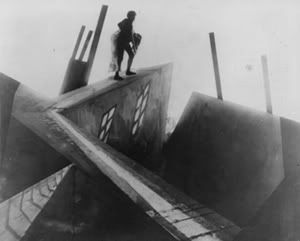The new Royal Ontario Museum's (ROM) extension sits on the narrow curb of Bloor street as if ready to fall on the innocent pedestrians. Its architect, Daniel Libeskind, who also started the Twin Towers memorial, but later on had to cede the design to another architect for fear of an unstable structure, has been very buoyant during his interviews about his new Toronto structure.
 |
 |  |
Interviewer: Your addition is radically different from the existing ROM building. Along with the praise, you’ve heard lots of criticism of it.Daniel Libeskind: When the Eiffel Tower was built, it was condemned universally. But what would Paris be without the Eiffel Tower?Libeskind hubristic response equating the Eiffel Tower with the new ROM extension is not even correct. The Eiffel Tower was built in the spirit of triumph, celebrating the one hundred years of the French Revolution and man's perceived victory against fate, at least the fate of ordained Kings and serfdoms, by lofty (if misguided) ideals of Liberty, Equality and Fraternity. It was also an ode to the science and technology, and the achievements of the industrial age.
What has Libeskind's convoluted structure to offer? Libeskind's consistent response is that his buildings are "different" and "progressive." That's it, according to him. That's their value.
But there is another undeclared layer that Libeskind is not articulating. Either he doesn't really know it, or is too clever to mention it. His buildings all convey destruction, the opposite of architecture. But why is that? I think primarily because of uncertainty. Libeskind has no principles to build on. Liberty, equality, science, centennials? None of these words figure in his interviews. Instead abstract and empty ones like "different" and "radical" describe much of his intentions.
Libeskind is essentially a nihilist. And since art is always the projector of its creator's thinkings, his buildings emerge as potentially (imminently) crumbling edifices. And his interiors are no different. There is a sense of claustrophobic despair inside his structures, as though the wall are about to fold in. In fact that was one of the strongest criticisms of the Jewish Museum in Berlin, another of his buildings on the verge of collapse.
Whenever architects and artists distort our structures to the point of collapse, I believe that danger is nearby. This was what happened just before the horror of the Nazis. German filmmakers were making their own nightmarish films, and claustrophobic buildings about to cave in figured prominently in their stage sets. But there was at least a sense of awareness of impending doom by the German filmmakers. They chose, unwisely, to deal with it in metaphorical terms. Libeskind, on the other hand, keeps cheerfully giving interviews about the renaissance of Toronto, with, of course, his exemplary contribution.
 |  |











